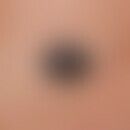Synonym(s)
DefinitionThis section has been translated automatically.
Hyperthyroidism after pregnancy is either caused by postpartum thyroiditis or by a recurrence of immune hyperthyroidism (Graves' disease).
Postpartum thyroiditis is classified as a variant of accelerated chronic lymphocytic thyroiditis (Hashimoto). It is called post-partum thyroiditis if it develops within a period of 12 months after delivery.
Occurrence/EpidemiologyThis section has been translated automatically.
4% of pregnant women (Abalovich M et al. 2007)
You might also be interested in
EtiopathogenesisThis section has been translated automatically.
Mostly unclear. Drugs can be triggering (e.g. amiodarone, interferon-alpha, interleukin-2). There is an association with HLA-DR3
ClinicThis section has been translated automatically.
The disease causes no pain. It often occurs as silent or silent thyroiditis. Women who already have elevated thyroid antibodies (TPO antibodies) before or during pregnancy are particularly at risk. Furthermore, women with a predisposition to chronic lymphocytic thyroiditis (Hashimoto) or autoimmune thyroiditis of the Graves' type as well as diabetes patients (Nicholson WK et al. (2006).
The disease often has a triphasic course:
- Initially it can go completely unnoticed (silent hyperthyroidism). The diagnosis is then a random finding (pathological laboratory values). More severe symptoms are signs of hyperthyroidism with tremors, nervousness, tachycardia and increased sweating. The hyperthyroid phase is caused by the inflammatory release of stored thyroglobulin. It lasts a few weeks and is self-limiting.
- Phase of hypothyroidism. During this time, patients suffer from fatigue and lack of drive.
- The third phase is characterized by a normalized, euthyroid functional position.
LaboratoryThis section has been translated automatically.
MAK/TPO antibodies are positive in 50-70% of cases. Antibodies against thyroglobulin (TAK) are positive in 20-40% of cases. Antibodies against TSH antibodies (TSH-R antibodies) are positive in 10-30% of cases.
TherapyThis section has been translated automatically.
Postpartum thyroiditis is treated symptomatically with beta-blockers if necessary (e.g. clear clinical signs of hyperthyroidism). Hypothyroidism then usually develops until the hormone synthesis has recovered. Therapy with levothyroxine is recommended from a TSH value > 10 mU/l. However, most women show a normalization of thyroid function within 1 year. Stop the levothyroxine therapy.
Progression/forecastThis section has been translated automatically.
In half of the women the disease spontaneously normalizes after one year.
ProphylaxisThis section has been translated automatically.
There is a significantly increased risk of developing permanent hypothyroidism in the following years. In this respect, annual thyroid function checks are indicated
LiteratureThis section has been translated automatically.
- Abalovich M et al (2007) Management of thyroid dysfunction during pregnancy and postpartum: an Endocrine Society Clinical Practice Guideline.J Clin Endocrinol Metab 92(8 Suppl):1-47.
- Classen M et al (2004) In: Classen M et al (Hrsg) Endocrine Diseases. Urban § Fischer publishing house Munich, Jena p.323
- Böhm BO (2018) Thyroid hormones. In: Neumeister B et al. (Eds) Clinical guide to laboratory diagnostics. Elsevier GmbH S. 294-295
- Fischli S (2016) Hyperthyroidism in young women. Practical information on diagnosis and therapy before, during and after pregnancy. Gynaecology 3: 33-39
- Hennessey VY (2015) Diagnosis and Management of Subclinical Hypothyroidism in Elderly Adults: A Review of the Literature. Journal of the American Geriatrics Society 63: 1663-1673.
- Nicholson WK et al (2006): Prevalence of postpartum thyroid dysfunction: a quantitative review. Thyroid16: 573-582
Disclaimer
Please ask your physician for a reliable diagnosis. This website is only meant as a reference.




